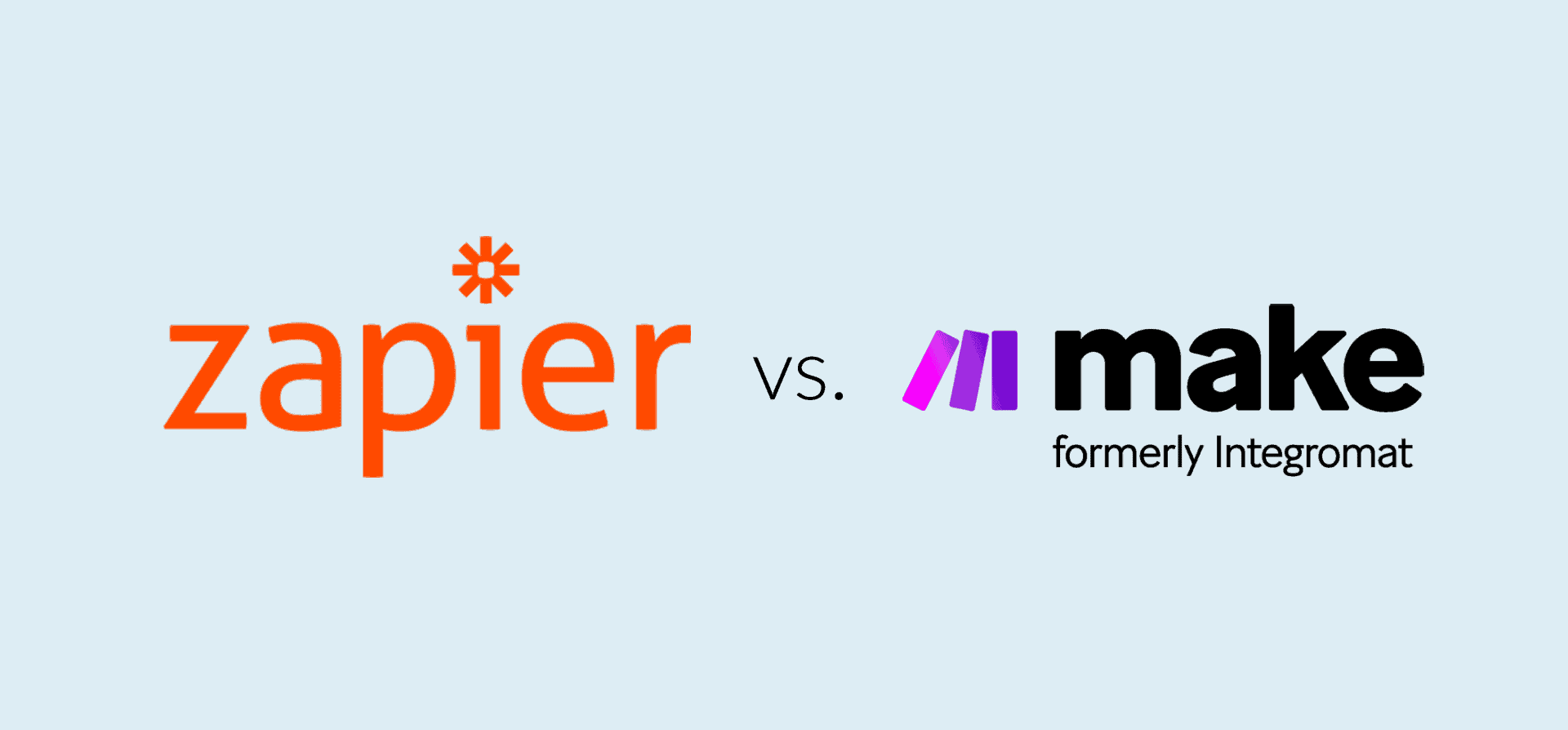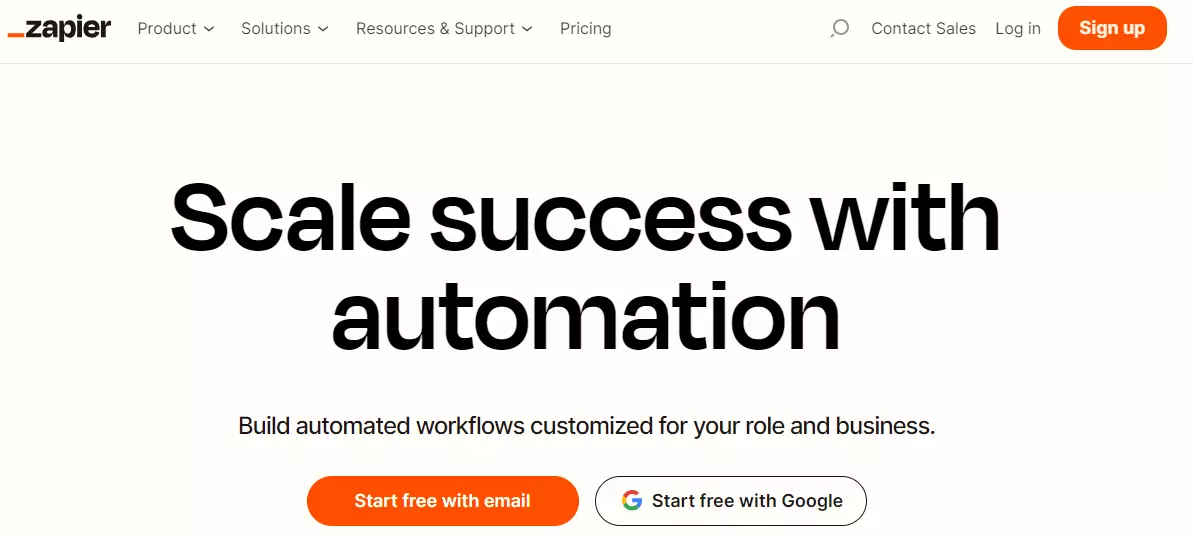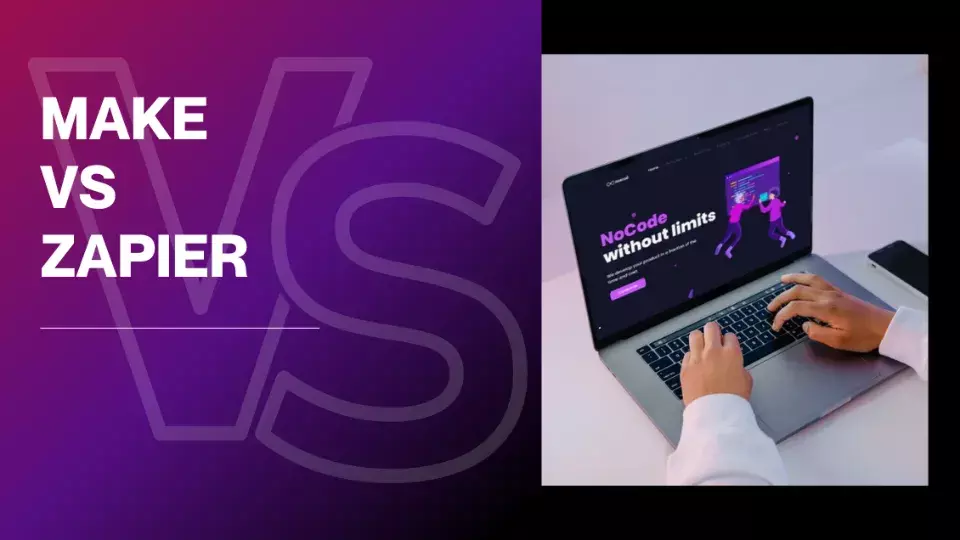
By channeling routine processes through a robust automation tool like Zapier or Make, these monotonous tasks can effortlessly operate in the background, freeing up precious hours for you.
But faced with the choice between the two tools, how do you decide? Continue reading for a detailed comparison of Make vs Zapier to help you make an informed decision.
In this article, we'll delve into the comparison between Make and Zapier, exploring their features, advantages, and considerations to help you make an informed decision for your automation needs.
What is Make?

Make, previously known as Integromat, shares similarities with Zapier as it enables users to construct and automate workflows through its visual interface.
With just a few clicks, users can link the necessary apps and determine their interactions. In Make, these sequences are called "scenarios" instead of Zaps.
Although Zapier holds a slightly longer tenure as an automation tool (being around for an additional year), Make has solidified its presence in the field due to its advanced features.
Key Features of Make
Here are some key features of Make.
Visual Editor: Make offers a visual editor that facilitates the creation of workflows with drag-and-drop functionality. This makes it accessible to users without advanced technical skills.
Conditional Logic: The platform allows users to implement conditional logic within their workflows, enabling the creation of intricate processes based on specific criteria.
Integration Capabilities: Make integrates with a wide array of apps, offering users the ability to connect with the tools they already use in their daily operations.
What is Zapier?

Zapier has long been a frontrunner in the automation space. It serves as an integration platform that connects apps and services, allowing users to automate tasks and data transfers between them.
Zapier's strength lies in its user-friendly approach, enabling individuals to create automated actions, known as Zaps, through a simple and intuitive interface.
For more information about this website, you can use Niche Finder's Website Audit to conduct an in-depth analysis.
Key Features of Zapier
User-Friendly Interface: Zapier's interface is designed to be user-friendly, with a straightforward setup that caters to users with varying levels of technical expertise.
Extensive App Integrations: Zapier supports thousands of app integrations, making it a versatile tool for connecting a wide range of services.
Zaps: Users can create Zaps, which are automated actions triggered by specific events, using Zapier's easy-to-use editor.
Make Vs Zapier: What are the Differences?

Here is an in-depth comparison of Make vs Zapier.
1. Ease of Use
Make: With its visual editor and user-friendly approach, Make is accessible to users without advanced technical skills. The drag-and-drop functionality simplifies the process of creating workflows.
Zapier: Zapier is renowned for its simplicity and ease of use. The platform's intuitive interface makes it easy for users to set up and manage their automated workflows.
2. Integration Capabilities
Make: Make offers integration with a variety of apps, ensuring users can connect with the tools relevant to their workflow. The platform continues to expand its library of integrations.
Zapier: Zapier is known for its extensive list of supported integrations, covering a wide range of apps and services. It is particularly valuable for businesses with diverse software ecosystems.
3. Flexibility and Customization
Make: Make excels in flexibility, allowing users to design both simple and complex workflows. The inclusion of conditional logic provides a high degree of customization.
Zapier: While Zapier is user-friendly, its customization options might not be as extensive as Makes. Users looking for a balance between simplicity and customization may find Zapier to be an ideal fit.
4. Complexity of Workflows
Make: Make caters to users seeking to automate both simple and complex workflows. The inclusion of conditional logic allows for the creation of intricate processes.
Zapier: Zapier is well-suited for users looking to automate straightforward tasks. While it can handle some complexity, Make might offer more advanced options for intricate workflows.
5. Pricing Structure
Make: Make typically offers a variety of pricing plans, including free and paid options. Users can choose a plan based on their specific needs and budget.
Zapier: Zapier follows a freemium model, offering free and paid plans. The pricing is based on the number of tasks and integrations required, making it essential for users to evaluate their usage patterns.
Conclusion on Make vs Zapier
Choosing between Make and Zapier ultimately depends on your organization's unique requirements and preferences.
If you prioritize flexibility, customization, and a visual approach, Make might be the better fit.
On the other hand, if simplicity, ease of use, and a vast array of integrations are paramount, Zapier remains a robust choice.

